Newsletter: Essential Arts: What’s behind the abrupt shutdown of the Marciano Art Foundation?
- Share via
It’s been a doozy! A museum mysteriously shuts down while another devotes its galleries to subversively decorative work from the ’70s. I’m Carolina A. Miranda, staff writer at the Los Angeles Times, with the week’s cultural essentials:
Troubles at the Marciano
The big news was the escalating series of events at L.A.’s Marciano Art Foundation. It started off last week, when the museum’s visitor services employees announced their intent to unionize. Four days later, the museum laid off the employees en masse and announced that it would be “closed to the public until further notice.” By Wednesday, the museum had issued a statement saying it had “no present plans to reopen.”
But like a Ronco ad, this story keeps on going. On Friday, the laid-off employees showed up at the museum to protest the layoffs, decrying them as a union-busting move. (In a statement, the museum attributed the shutdown to “low attendance.”)
For the record:
1:41 p.m. Nov. 9, 2019An earlier version of this story identified a researcher of Armenian monuments as Simon Kaghakyan. His last name is Maghakyan.
I report on what it all means: “The story of the Marciano isn’t simply the story of a single museum. It is a story about wealth and class and labor in an art world keen to tout itself as a social good.”
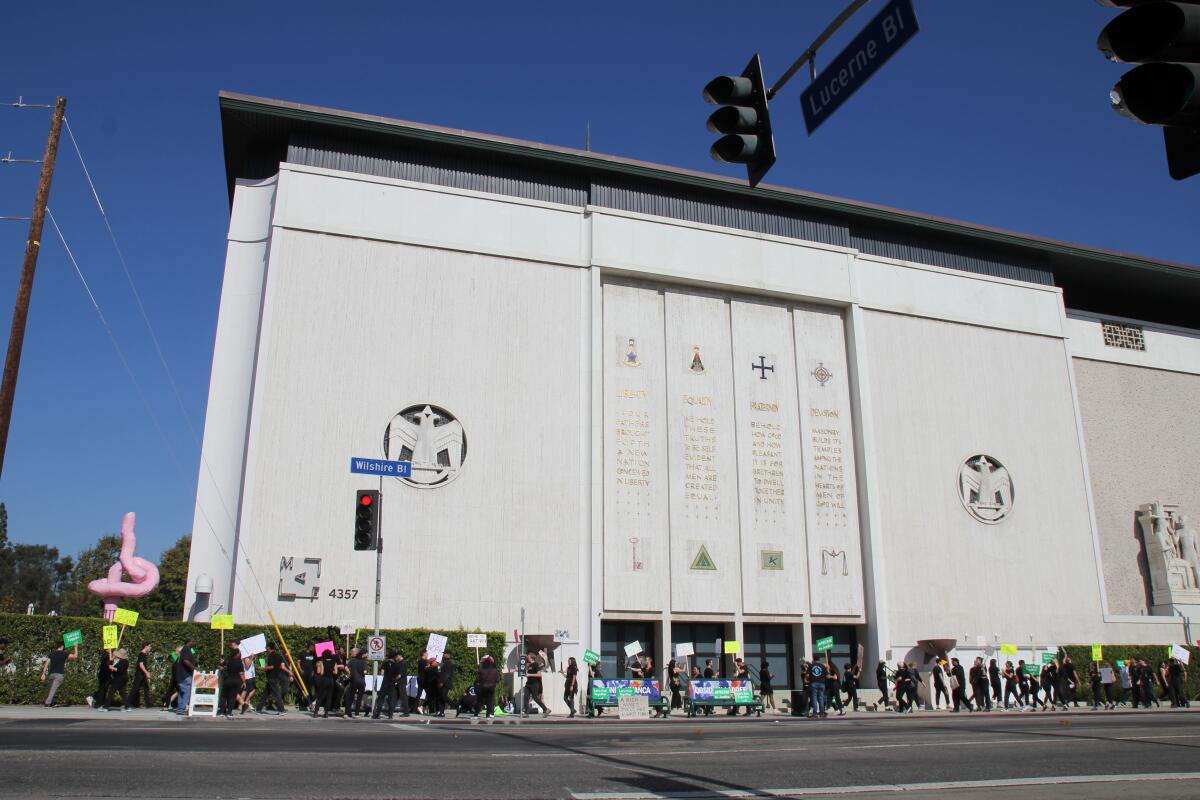
Destruction of heritage
Azerbaijan has been systematically erasing historic Armenian monuments, a phenomena that has been doggedly documented by researcher Simon Maghakyan, who recently published his findings in Hyperallergic and presented them at a conference in Pasadena. “It’s not a job,” he tells Catherine Womack. “It is my lifelong cause.”
On the stage
One of the most buzzed about shows of Broadway’s fall season is the 6½-hour play, “The Inheritance,” written by Matthew Lopez. The play is a cross-generational tale about a group of gay men that was inspired by the author’s interest in novelist E.M. Forster, who was gay, and a version of whom also figures in the play. “I am telling my experience as a gay man born in 1977,” he tells The Times’ Daryl H. Miller. “The life that I’ve lived, the men I have known, the friends I have lost, the hopes that I have, the fears that I’ve grappled with, the shame that I’ve grappled with.”

“The Thanksgiving Play,” on view at the Geffen Playhouse, tells the story of four white actors struggling to devise a sensitive depiction of Thanksgiving for a school pageant. Written by Larissa FastHorse (Sicangu Lakota), the play touches on important issues about indigenous representation in a comedic way. “I got into play writing not just to write plays,” she tells The Times’ Makeda Easter, “but to change the field.”
Times theater critic Charles McNulty says FastHorse‘s “satire has moments of sharpness, but mockery can hold our interest for only so long.”
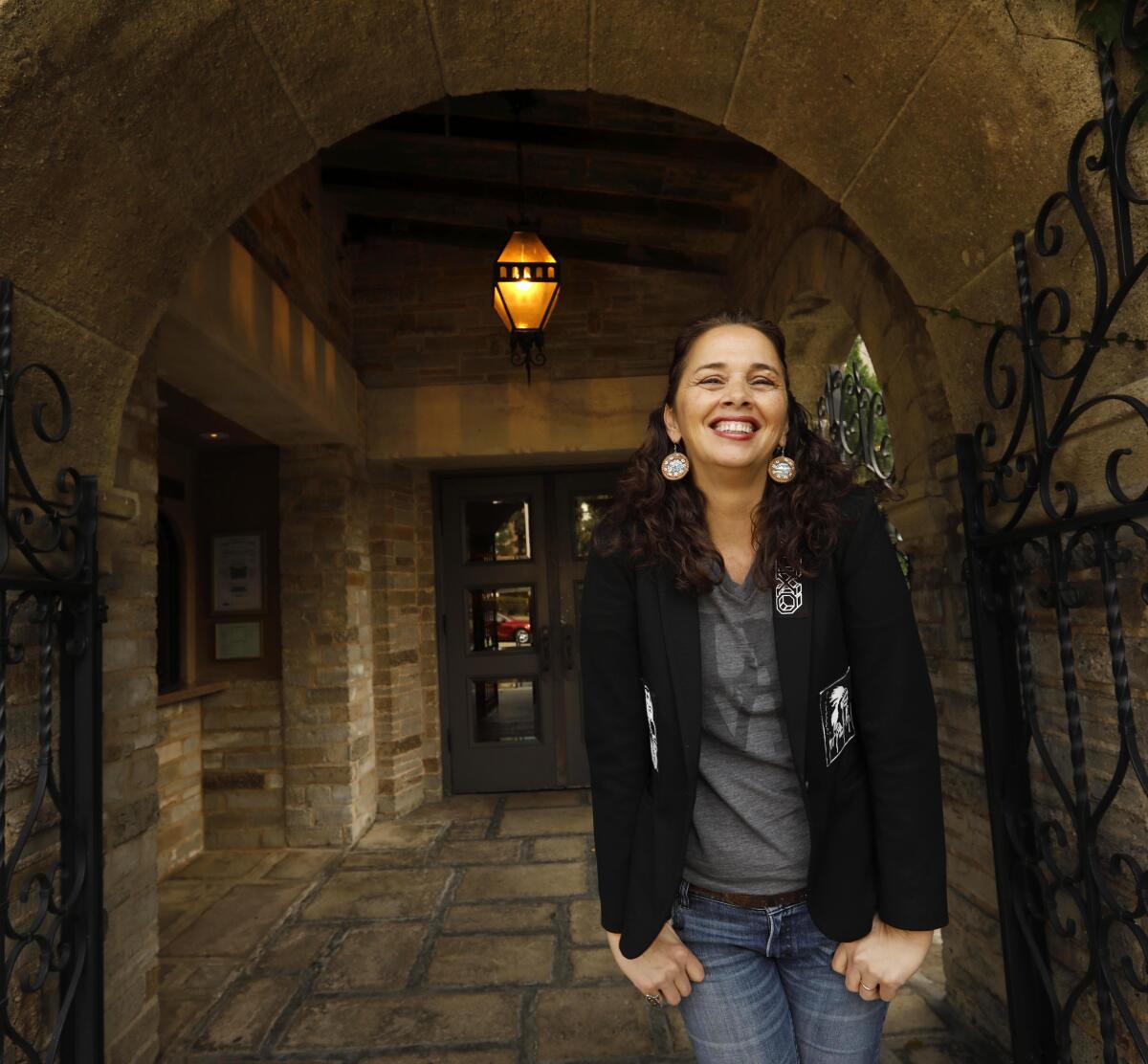
Actor BD Wong, who starred in “A Great Leap” last year, is coming back to Lauren Yee’s play as director of a new production at the Pasadena Playhouse. “You have to let go of what you had repeatedly told yourself was your truth about this piece,” he tells The Times’ Ashley Lee, “and open yourself up to new ideas.”
“Elijah,” about an unlikely mix of people trapped in a TGI Friday’s, is having its West Coast premiere at the Victory Theatre. The work shows playwright Judith Leora “in full command of her craft,” writes F. Kathleen Foley, a work that starts off polemical, but “deepens into a beautifully realized, classically structured drama.”
Philip Brandes checks out a “fierce” production of Arthur Miller’s “All My Sons” courtesy of Pacific Resident Theatre: “The bare-knuckle confrontations are riveting in [director Elina] De Santos’ well-paced staging.”
And contributor Marissa Gluck attends an unusual concert by Les Sewing Sisters, whose preferred performance venues consist of closets, their only instruments, sewing machines. “The result is Kraftwerk meets musique concrète,” writes Gluck.
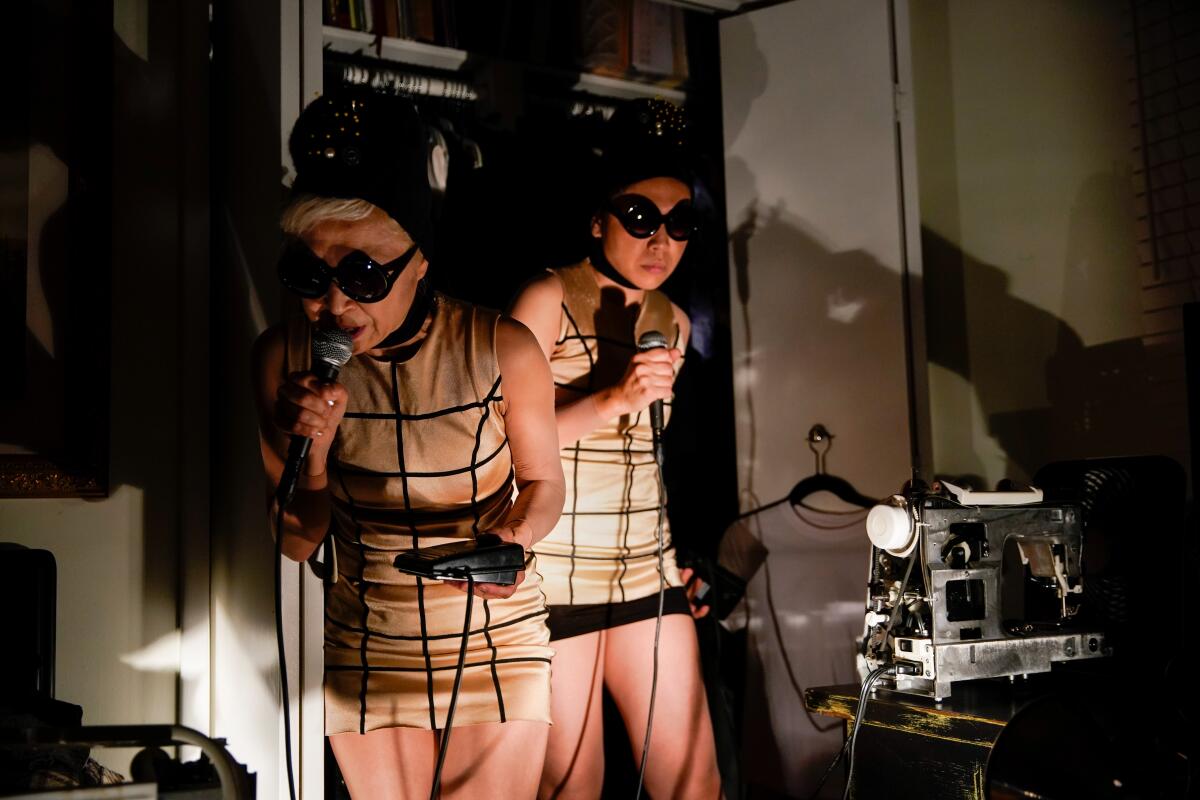
And in case you like your theater on TV: Critic Robert Lloyd reports on “Slings & Arrows,” “a gorgeous Canadian import” set at a Shakespeare festival.
Classical notes
Times classical music critic Mark Swed checked out new music at a recent Green Umbrella concert, including composer Gabriella Smith’s “Carrot Revolution,” which featured four L.A. Phil string players. “They sashay through a variety of sounds, sound effects and curious tunings,” he writes, “the violin at one point whistling its approval.”
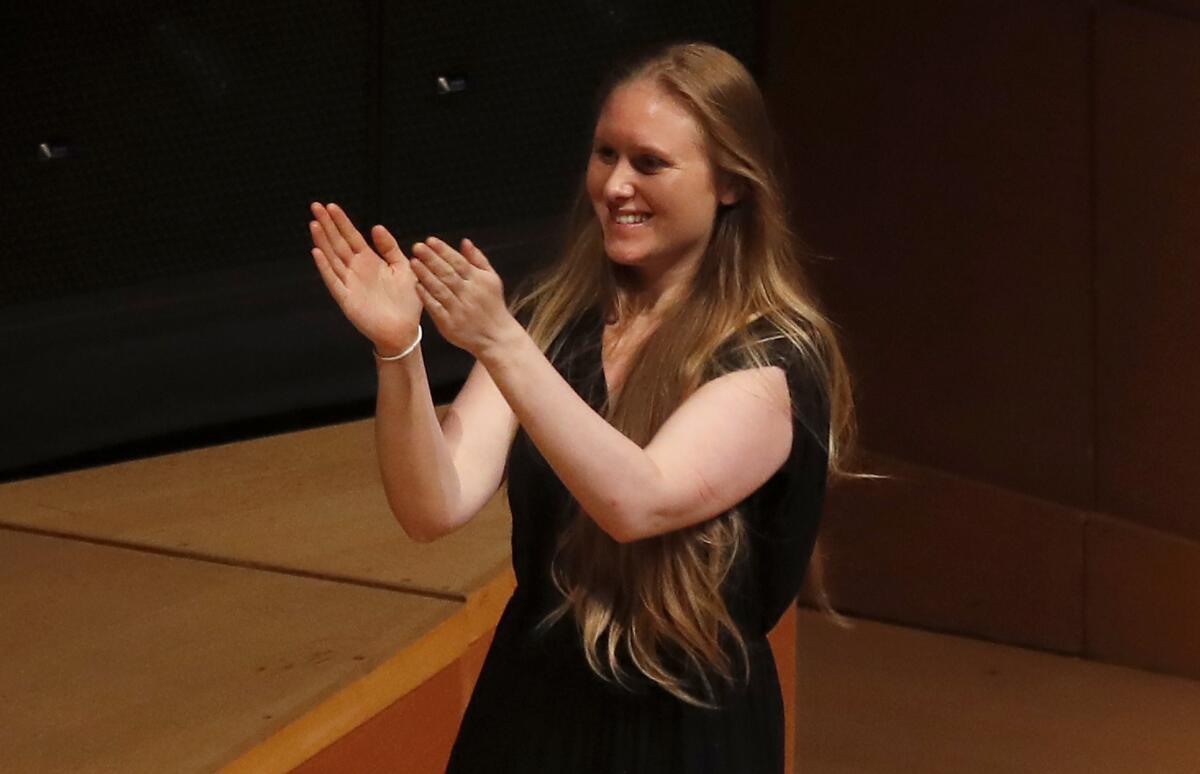
Last week, the L.A. Phil did a repeat performance of Andrew Norman‘s “Sustain,” led by Gustavo Dudamel, a work that left some listeners with hair standing on end when it was first performed last year, and which Swed declares a “masterpiece.” “The best thing about ‘Sustain,’ other than its sheer beauty, is that it is, by its very nature,
unattachable,” he writes.
Swed recently tuned in to a pair of performances of Wagner’s “Walküre,” one led by Esa-Pekka Salonen at the Colburn School, and the other, conducted by the New York Phil’s Jaap Van Zweden, which he he caught via livestream. “The main difference was that Van Zweden provided the Wagner we know,” he writes. “Salonen glimpsed the Wagner every generation keeps trying to figure out.”
In the galleries
Call me intrigued by any show that Times art critic Christopher Knight describes as “an eccentric violation of the norms of serious painting and sculpture.” That’d be his review on “With Pleasure: Pattern and Decoration in American Art, 1972-1985,” on view at the Museum of Contemporary Art. “P&D, as 1970s Pattern and Decoration was soon called, poked a well-placed finger — or three — in the eye of Minimal art’s crisp reduction of austere forms,” he writes. I’m sold.
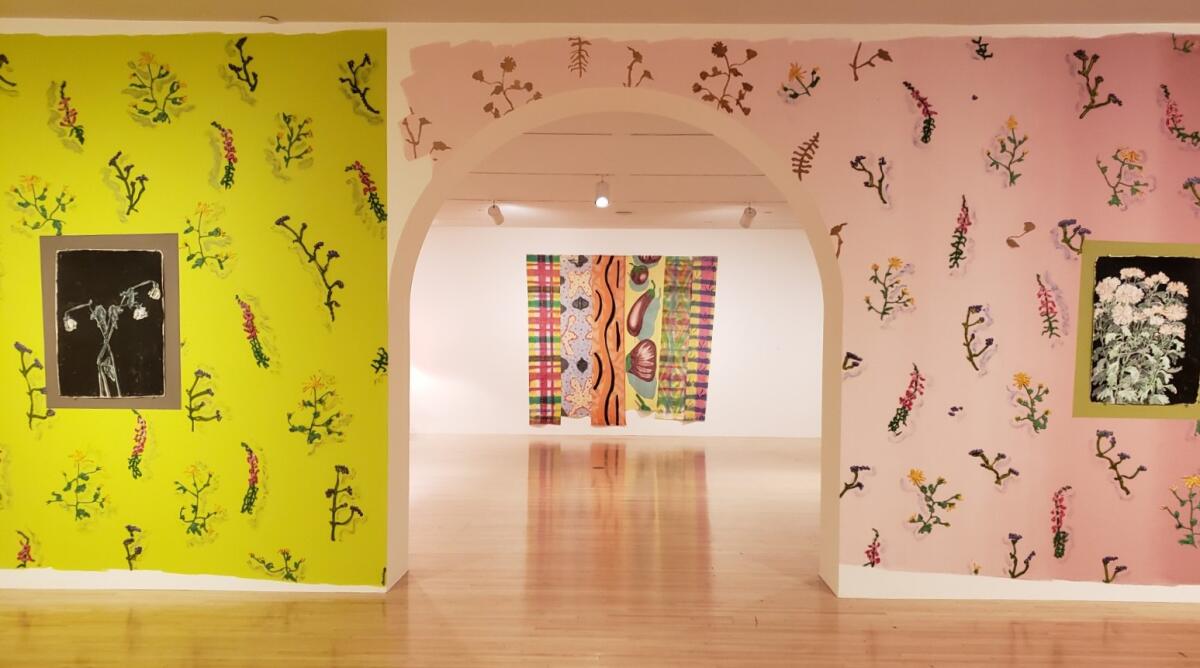
What I’m listening to:
My colleague Gustavo Arellano‘s podcast about how the Prop. 187 ballot initiative shaped California politics 25 years ago — awakening a generation of Latino activists. The podcast is, in turns, funny, informative and surprising. (Go figure that a proposition targeting Mexican immigrants would be plotted at ... a Mexican restaurant.) Arellano also wrote an accompanying print story.
Sort of related: Here’s a little somethin’ somethin’ I wrote about one of my favorite cultural artifacts of the era: Pocho magazine.

Ready for the weekend
Daryl H. Miller rounds up what’s doing in small theaters, including a musical version of “Romeo and Juliet,” set to the music of Brandi Carlile.
I’ve got the artsy fartsies in my weekly Datebook, including new works by painter Hugo Crosthwaite, who recently won the National Portrait Gallery‘s portrait competition.
Matt Cooper has the week ahead in art, music and theater — as well as his picks of 9 things to do around L.A., including an Irish version of “Swan Lake.”
Your support helps us deliver the news on culture — and this newsletter. Subscribe to the Los Angeles Times.
In other news
— There is a portrait of the beloved late astrologer Walter Mercado, now on view at the Smithsonian’s National Portrait Gallery in Washington, D.C. Mucho, mucho amor!
— Placido Domingo has withdrawn from pre-Olympics cultural events in Japan.
— James Niehues, the mapmaker known as the “Rembrandt of snow.”
— The Time Sensitive podcast has a great interview with Rashid Johnson, touching on art, shea butter, Chicago and his filmed version of “Native Son.”
— In a joint profile of Celia Paula and Cecily Brown, Rachel Cusk asks the very good question: “Can a woman who is an artist ever just be an artist?”
— Sort of related: Female artists will take over museums in 2020 to coincide with the presidential election.
— Affordability is the number one No.1 concern for artists in L.A., finds a new survey by Arts for LA.
— I’m intrigued by how this exhibition on the Young Lords in the Bronx employs the city’s streets as a gallery.
— That shuttered Macy’s in the former Westside Pavilion is going to be turned into creative office space.
— I enjoyed A.O. Scott’s essay about Susan Sontag.
And last but not least....
The Chilean opera singer who performed from her window during the curfew.
More to Read
The biggest entertainment stories
Get our big stories about Hollywood, film, television, music, arts, culture and more right in your inbox as soon as they publish.
You may occasionally receive promotional content from the Los Angeles Times.











